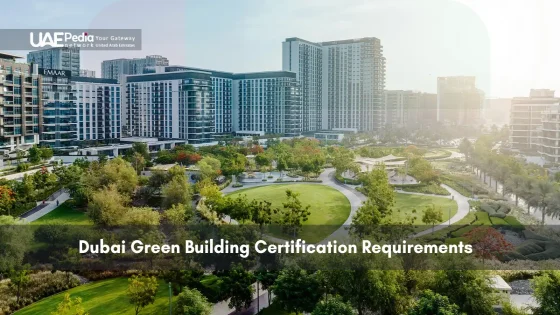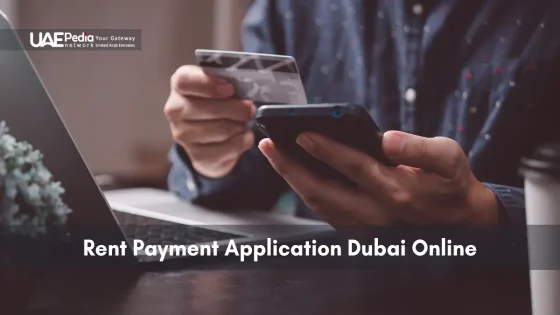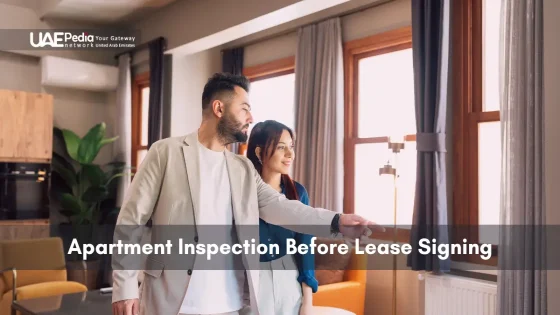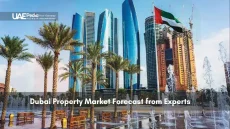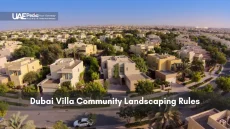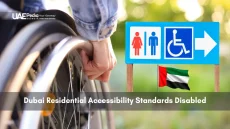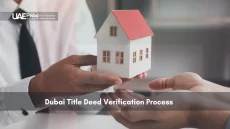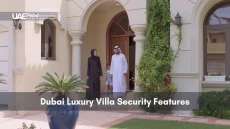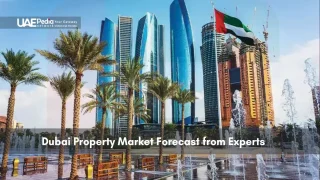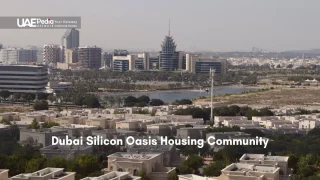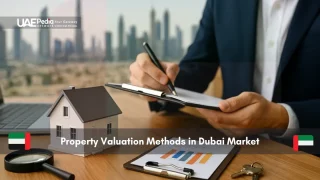What if transforming concrete jungles into eco-conscious spaces could also boost property values by up to 20%? While palm-shaped islands once defined ambition here, today’s skyline tells a quieter revolution: sleek towers harvesting sunlight and recycling every drop of water.
Over the past decade, this desert metropolis has reimagined urban growth through smarter resource use. From mandatory efficiency standards to solar-powered communities, the shift blends innovation with cultural respect for nature’s limits. You’ll find architects now competing to integrate wind towers and smart shading systems – not just gold-plated facades.
This guide walks through the frameworks shaping tomorrow’s cities. We’ll explore how local codes balance cutting-edge tech with traditional cooling methods, why certifications like Estidama matter for developers, and how initiatives like the Dubai Clean Energy Strategy 2050 create opportunities. You’ll discover:
- How updated regulations reduce energy use while maintaining architectural boldness
- Practical steps to meet water conservation targets without sacrificing comfort
- Real examples where sustainable design increased tenant demand and ROI
Whether you’re planning a mixed-use project or retrofitting existing structures, these insights help navigate the region’s unique blend of ambition and responsibility. Let’s explore what makes these standards more than checklists – they’re blueprints for thriving urban ecosystems.
Understanding Dubai’s Sustainable Building Landscape
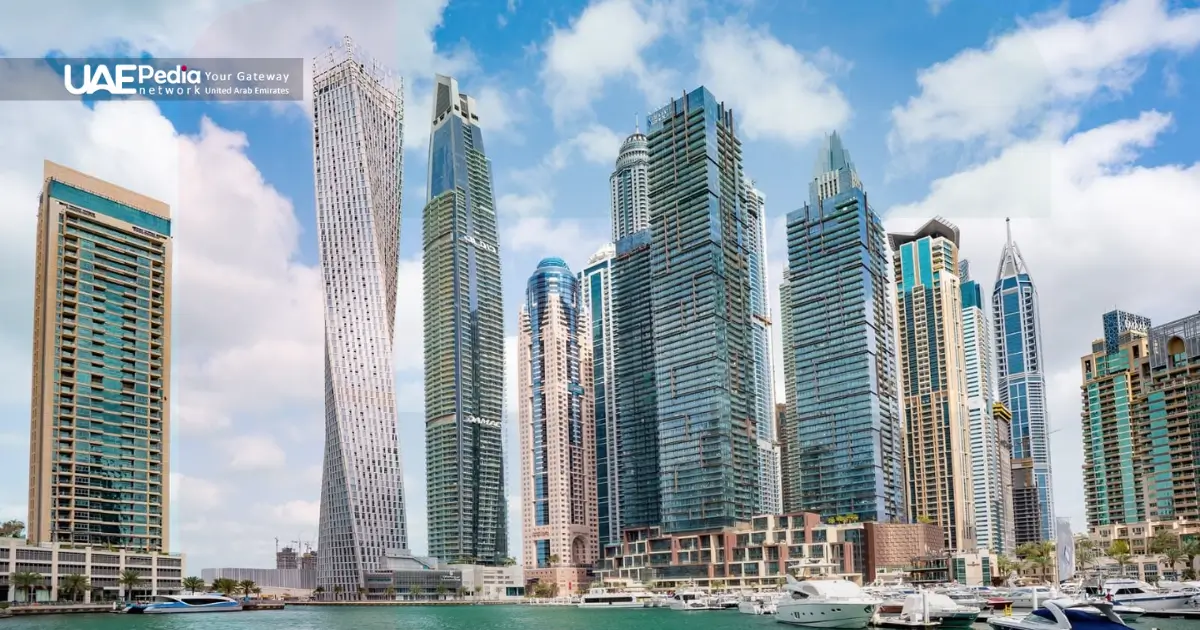
Imagine a city where skyscrapers sip sunlight like desert flowers. This blend of tradition and tech defines modern construction here. You’ll notice architects aren’t just chasing height anymore – they’re racing to balance glass facades with smarter resource use.
Smart Designs Meet Desert Wisdom
Local projects now follow two playbooks: global standards like LEED and homegrown systems like Estidama. Think of them as recipe books for structures that breathe easier. One developer told us: “Our towers now use 40% less energy than five years ago – without losing an ounce of luxury.”
| Standard | Focus Area | Unique Feature |
|---|---|---|
| LEED | Energy savings | Global recognition |
| Estidama | Water efficiency | Desert adaptation |
| Al Sa’fat | Local compliance | Municipal incentives |
An MDPI study of Abu-Dhabi villas found that upgrading from baseline construction to a 2-Pearl Estidama rating cut annual energy demand by 43 % and reduced life-cycle costs by one-third—evidence that higher Pearl tiers deliver measurable returns.Ref.: “Al Saad, M. & Abanda, H. (2021). Estidama and the Pearl Rating System: A Comprehensive Review and Alignment with LCA. Sustainability.” [!]
Why Sustainability Sticks Here
Three forces drive this shift. First, government mandates require smarter energy use in new projects. Second, tech like solar-responsive windows cuts costs long-term. Third? Tenants pay premium rates for spaces with cleaner air and lower bills.
Dubai Municipality’s latest report shows a 33% drop in water waste from certified towers since 2020. That’s enough to fill 1,500 Olympic pools annually. Now that’s what we call turning sand into solutions.
dubai green building certification requirements Explained
Ever wondered how sleek towers here earn their environmental stripes? Let’s break down the journey from blueprint to certified structure – think of it as a roadmap where smart planning meets desert-smart solutions.
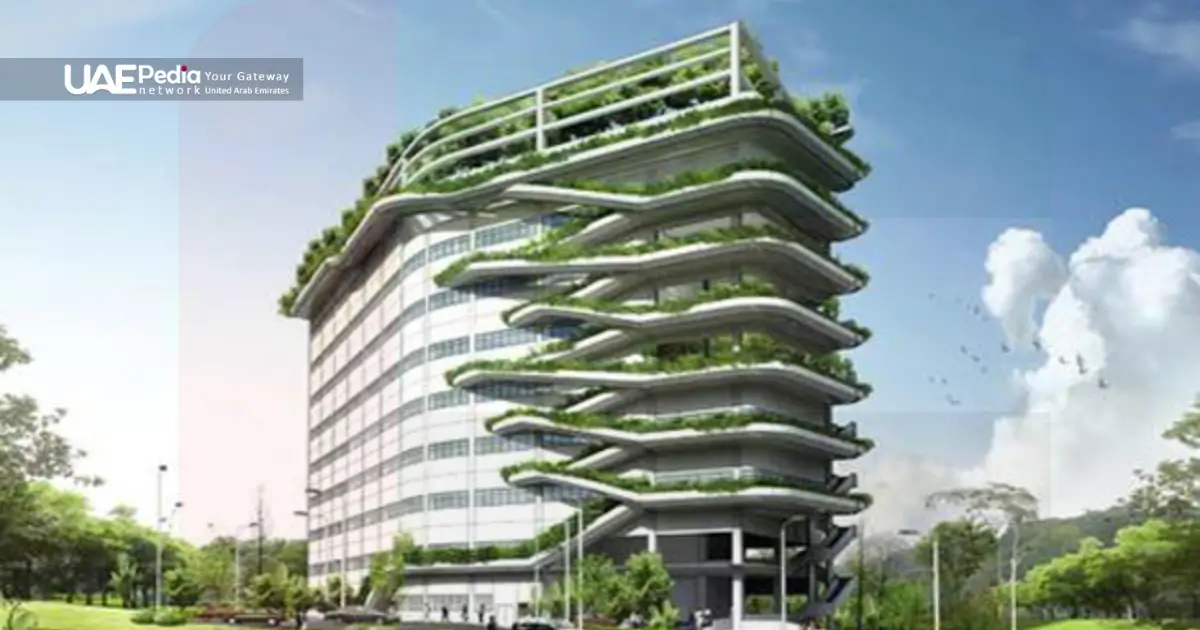
Steps of the Certification Process
First, teams submit a Green Building Declaration outlining energy sources and material choices. Next, Dubai Municipality reviews construction plans for water conservation features and renewable energy integration. One project manager shared: “We redesigned our cooling systems three times to hit the 35% efficiency target – worth every dirham saved long-term.”
Dubai Municipality can suspend or revoke building permits and impose fines up to AED 100,000 for serious code breaches—projects have been halted mid-construction after inaccurate sustainability data was uncovered.Ref.: “Hadef & Partners. (2024). The Legal Impact of Non-Compliance with Dubai’s Building Codes. H&P Legal Commentary.” [!]
Post-approval, inspectors conduct five site visits minimum. They’ll check everything from insulation thickness to solar panel angles. The Sustainable City community passed its final audit by recycling 85% of construction waste – a local record.
Documentation and Compliance Essentials
Paperwork starts with energy modeling reports and sustainable material invoices. Developers must prove they’ve cut environmental footprints by at least 20% versus standard builds. EmiratesGBC then cross-checks data against both global benchmarks and regional needs.
| Requirement | Local Standard | Global Benchmark |
|---|---|---|
| Water Reuse | 50% minimum | 30% average |
| Energy Savings | 25% reduction | 15% reduction |
| Materials | 30% regional | 10% recycled |
Final tip? Start early. Projects like the Al Barari Gardens completed their paperwork six months ahead of schedule – smoothing the path for faster occupancy permits and happier investors.
Exploring Green Building Certifications in Dubai
How do architects here choose between global fame and local wisdom when stamping their eco-credentials? The answer lies in a vibrant mix of certifications – think of them as nutrition labels for structures, each revealing how well a project nourishes both people and planet.
Global Badges With Desert Tweaks
LEED’s worldwide reputation acts like a Michelin star for eco-conscious developers. Projects like Dubai Creek Harbour showcase its focus on energy innovation – solar panels dancing with wind turbines. But here’s the twist: desert heat demands extra layers. One engineer quipped, “Our LEED Platinum tower added smart irrigation that waters plants at 4 AM – saves 30% more than the standard requires.”
| Certification | Strength | Local Adaptation |
|---|---|---|
| LEED | Global prestige | +30% water rules |
| Estidama | Desert resilience | Shade-first design |
| Al Sa’fat | Retrofit focus | Cool roof mandates |
Dubai simulations show that poorly ventilated double-skin façades can raise cooling loads, limiting net gains to about 8 % overall energy savings and adding façade premiums of up to 20 %. Evaluate cavity width, glazing type and vent control before specifying.Ref.: “Ashour, M. (2014). Energy Saving by Using Double Skin Façade for Office Buildings in the UAE. British University in Dubai.” [!]
Homegrown Systems Rising
Estidama – Arabic for ‘sustainability’ – feels like a tailored thobe for the Gulf climate. Its Pearl Rating System grades projects on regional priorities: dust-resistant ventilation, native landscaping. The Sustainable City community scored highest ever by treating 90% of wastewater onsite. Meanwhile, Al Sa’fat helps older towers get eco-makeovers through lighting upgrades and insulation boosts.
These standards aren’t just checklists – they’re sparking a design revolution. Architects now compete to blend Bedouin cooling tricks with AI-powered energy systems. As one planner told us: “Our latest project uses 3D-printed clay walls – ancient technique, space-age execution.”
Green Building Regulations and Government Initiatives
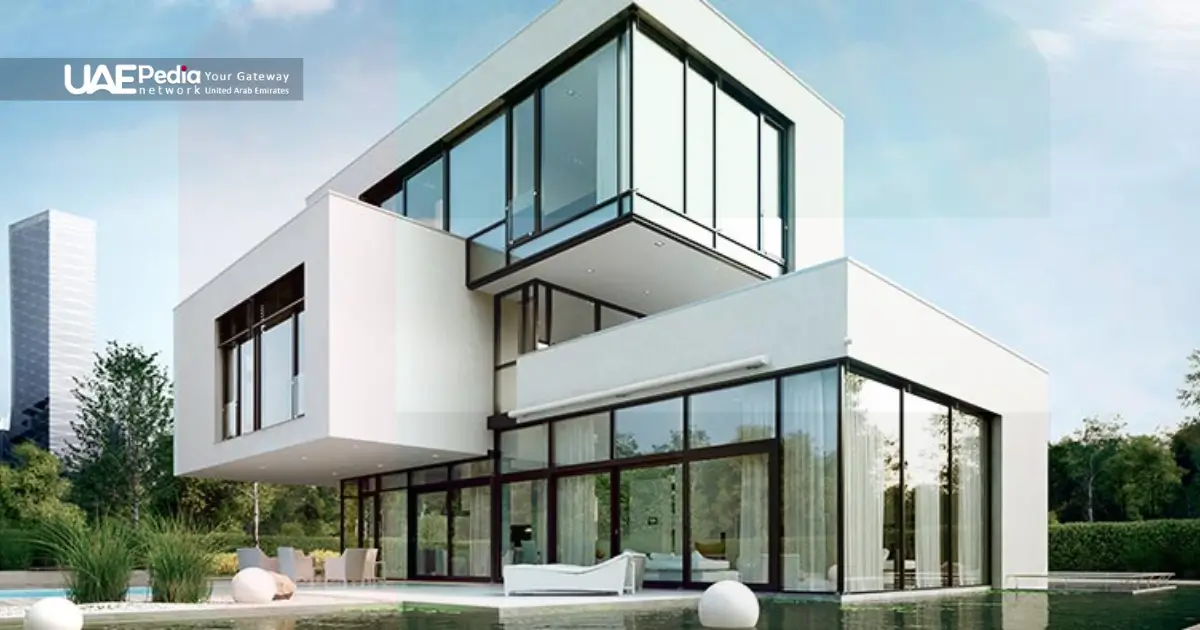
Ever tried navigating a rulebook that actually makes structures cooler—literally? Since 2014, mandatory sustainability benchmarks have transformed how towers rise here. Sheikh Mohammed’s vision birthed policies balancing ambition with ecological care—like requiring all new projects to slash energy use by 25% minimum.
Guardians of the Blueprint
Dubai Municipality acts as both coach and referee. Their team reviews every design for water recycling systems and smart insulation. EmiratesGBC then audits progress through surprise site checks. One developer shared: “They caught our HVAC specs missing airflow sensors—fixed it before pouring concrete.”
“Explore More: Dubai Clean Energy Strategy“
Paperwork That Pays Off
Getting permits involves three key steps:
- Submit energy modeling reports showing 20%+ efficiency gains
- Provide supplier contracts for regional materials (30% minimum)
- Install monitoring systems for real-time water tracking
Projects meeting these standards often qualify for tax rebates and faster approvals. The Sustainable City cut utility costs by 40% post-certification—its property values now outpace neighbors by 18%. Turns out, playing by green rules isn’t just ethical—it’s profitable.
“Further Reading: Dubai 2040 Urban Master Plan“
Innovative Technologies and Sustainable Practices
Picture a skyscraper that cools itself using desert winds while generating power from its glass skin. Here’s how modern projects crack the code of efficiency without sacrificing style. Architects now blend ancient cooling tricks with AI-driven systems – think shaded courtyards paired with real-time energy trackers.
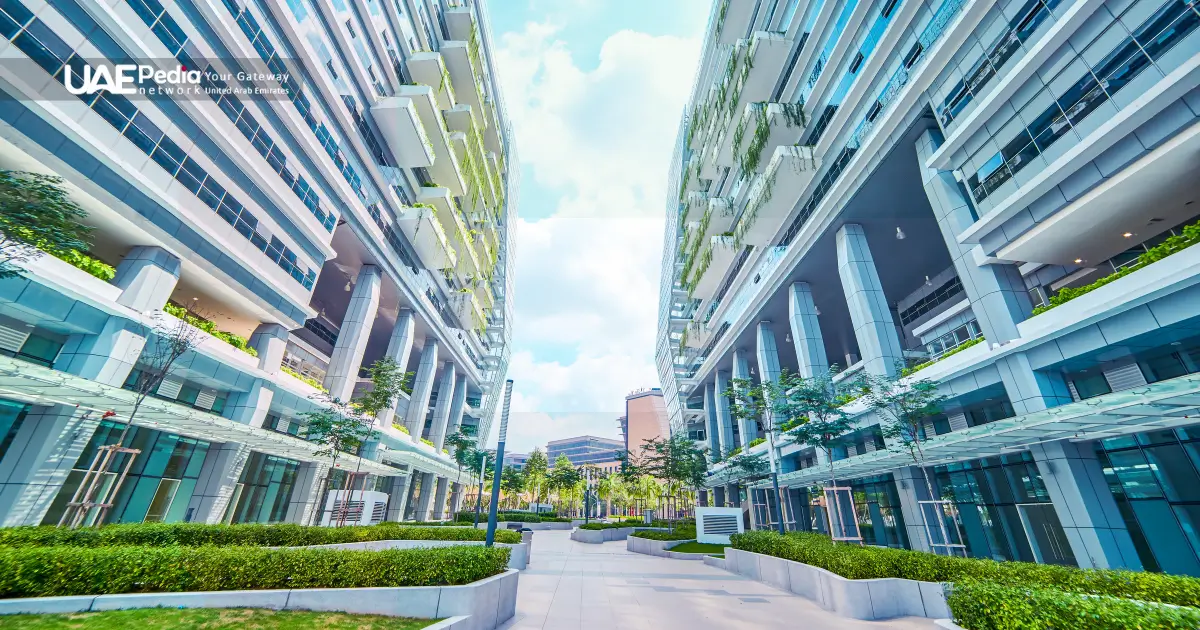
Powering Progress Through Smart Design
Advanced HVAC systems now use 40% less energy by learning occupancy patterns. The Mohammed Bin Rashid Al Maktoum Solar Park inspires building-integrated photovoltaics – panels embedded in façades and parking shades. One engineer described it: “Our tower’s solar skin generates enough juice to power all common areas – like wearing a power plant as a jacket.”
- Double-skin façades reduce cooling loads by 25%
- Phase-change materials in walls absorb heat peaks
- Smart lighting adjusts to daylight levels every 30 seconds
The updated UAE Energy Strategy 2050 requires 30 % of installed capacity to come from clean sources by 2030 and targets a 42–45 % improvement in national energy-use efficiency. Designs submitted after 2025 must demonstrate grid-ready solar or equivalent renewables to align with these milestones.Ref.: “Ministry of Energy & Infrastructure. (2023). UAE Energy Strategy 2050 Update Press Release.” [!]
Materials That Multiply Impact
Builders swap carbon-heavy concrete for alternatives like:
- Recycled steel requiring 75% less energy to produce
- Local sandstone cladding that reflects sunlight
- 3D-printed partition walls using construction debris
Tabreed’s retrofit of variable-frequency drives across legacy chillers will save an estimated 223 GWh and prevent 105,000 t CO₂ over the next decade—evidence that VFD upgrades can cut HVAC energy by 30-50 % in Gulf-climate towers.Ref.: “Tabreed. (2024). Tabreed Achieves Significant Energy Savings with Variable Frequency Drives in Extensive Retrofit Programme. Press Release.” [!]
Water-saving tech makes every drop count. The Bluewaters Island complex recycles 65% of its graywater for landscaping. Low-flow fixtures cut consumption by 30% – saving enough annually to fill 300 Olympic pools. As one facilities manager noted: “Our smart irrigation knows when it’ll rain tomorrow – why water today?”
These innovations aren’t just eco-friendly – they’re wallet-friendly. Projects using these systems report 18-22% lower operating costs within two years. The future of construction? It’s not just about building up, but building smarter.
Economic and Environmental Benefits of Green Buildings
What if saving the planet could also pad your wallet? Modern structures here prove eco-smart choices aren’t just ethical – they’re financial power moves. Let’s unpack how smarter designs create value for both pockets and ecosystems.
Dollars and Sense in Sustainable Design
Efficient layouts slash utility bills from day one. Take The Sustainable City community – its solar-powered homes cut energy costs by 60% compared to conventional villas. One investor shared: “Our tenants stay longer and pay 15% premiums for cleaner air and lower bills – that’s recurring revenue you can’t ignore.”
| Feature | Conventional | Sustainable |
|---|---|---|
| Annual Energy Use | 85 kWh/m² | 52 kWh/m² |
| Water Conservation | 12% recycled | 48% recycled |
| Air Quality Index | Moderate | Excellent |
Breathing Easier, Living Better
Advanced filtration systems trap dust and allergens while circulating fresh air. Projects using low-VOC paints and natural ventilation report 30% fewer respiratory complaints. Bonus? These health perks translate to higher worker productivity – studies show up to 11% cognitive performance boosts.
Here’s the kicker: eco-friendly structures reduce carbon footprints by 34% on average. That’s like taking 200 cars off the road yearly per tower. As one facilities manager put it: “We’re not just cutting costs – we’re building legacies that outlive quarterly reports.”
For forward-thinking developers, sustainability isn’t a cost center – it’s a market differentiator. Properties with top-tier ratings lease 40% faster and maintain higher resale values. The numbers don’t lie: doing good is good business.
“Related Topics: UAE Green Spaces in Urban Development Projects“
Adapting Green Building Strategies to Dubai’s Climate
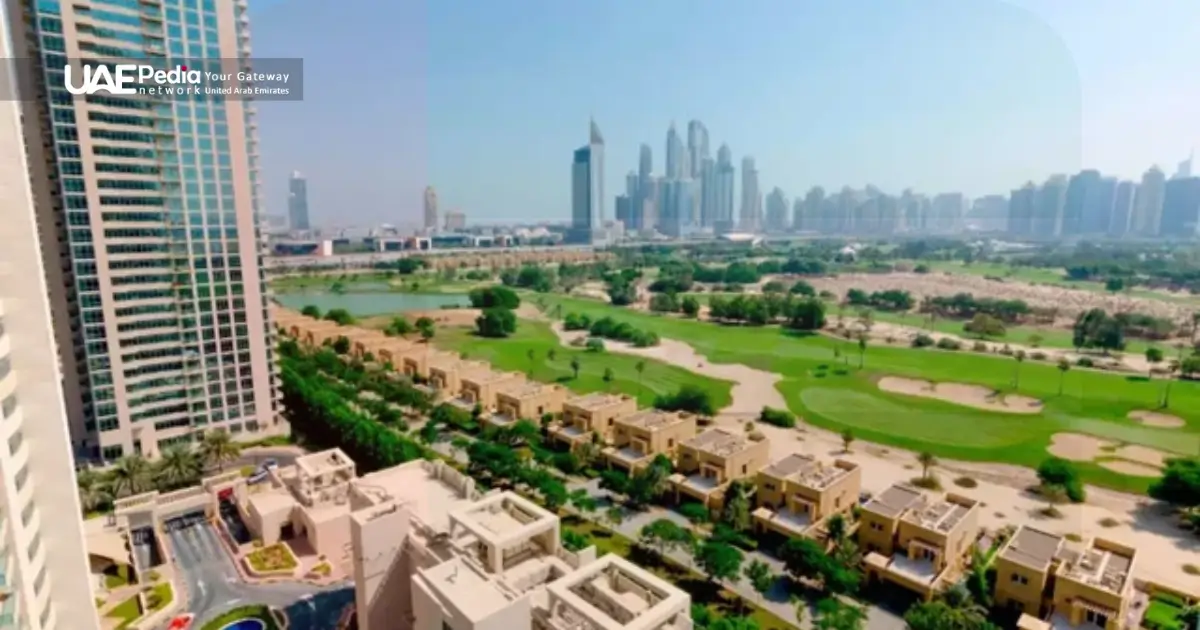
How do structures stay cool when summer thermometers hit 122°F? Architects here blend ancient wisdom with space-age tech – think wind towers whispering through courtyards while smart glass tints itself against the sun’s glare.
“Check This Out: Major Government Projects and Their Administration in the UAE“
Nature’s Air Conditioning
Traditional mashrabiya screens aren’t just decorative – they filter sunlight while allowing breezes to flow. Modern twists include:
- Automated louvers that track shade patterns
- Phase-change wall materials absorbing heat peaks
- Green roofs reducing ambient temperatures by 14°F
One engineer revealed: “Our latest project uses sensor-driven vents – like having 1,000 tiny windows deciding when to breathe.”
Every Drop Multiplied
Water scarcity demands innovation. The Opus Tower recycles 60% of its graywater for landscaping through:
| System | Savings | Impact |
|---|---|---|
| Drip irrigation | 55% less usage | Healthier plants |
| Condensate capture | 200k gallons/year | Free cooling |
| Smart meters | 23% waste reduction | Real-time alerts |
Developers report 18% faster lease-ups for projects using these systems. As one investor noted: “Tenants love watching their water bills shrink like ice cubes in the shade.” These climate-smart choices prove luxury and responsibility can coexist – no compromises needed.
“Learn More About: UAE 2030-2050 Plan“
Overcoming Implementation Challenges and Shaping Future Trends
Breaking new ground often means hitting unexpected rocks. While sustainable construction promises long-term rewards, initial hurdles test even seasoned developers. Let’s explore how innovators are turning roadblocks into stepping stones.
“Read More: Dubai Sustainable Housing Development Projects“
Cost Barriers Meet Creative Solutions
Upfront investments in eco-friendly materials and tech remain daunting. One contractor shared: “Our first low-carbon project required 18% more capital – but we recouped costs through tax incentives within three years.” Resistance from traditional firms persists too. A 2023 survey revealed 41% of construction managers still prioritize speed over sustainability.
| Challenge | Traditional Approach | Modern Solution |
|---|---|---|
| Material Costs | Import steel/concrete | Local recycled alternatives |
| Labor Training | On-site trial/error | VR simulation modules |
| ROI Timeline | 5-7 year payback | Green financing packages |
Tomorrow’s Tools Reshaping Today
Emerging technologies are rewriting the rules. AI-powered monitoring systems now predict energy use patterns with 92% accuracy. Solar-responsive concrete – yes, that exists – generates power while bearing structural loads. The Sustainable Tower in Business Bay cut water use by 60% using smart moisture sensors in its vertical gardens.
Regulatory shifts accelerate adoption too. New codes mandate real-time carbon tracking for major developments starting 2025. As one planner noted: “We’re not just building structures anymore – we’re crafting living environmental dashboards.”
These innovations prove that sustainable design isn’t a cost center – it’s the ultimate competitive edge. Early adopters report 22% faster lease-ups and 35% lower operational headaches. The future of construction? It’s bright, efficient, and built to last.
Final Reflections on Building a Sustainable Future in Dubai
What if the towers we build today could whisper lessons to tomorrow’s architects? This desert metropolis has rewritten the playbook for urban growth – blending solar-powered innovation with time-tested cooling wisdom. Let’s connect the dots between smart design, economic gains, and environmental stewardship.
From energy-saving technologies to water-smart systems, every choice shapes communities. Developers now see 20% faster returns on projects using recycled materials, while tenants enjoy cleaner air and lower bills. Recent data shows over 72,000 structures here meet rigorous efficiency standards – proof that scale and sustainability coexist.
“Discover More:
The journey requires teamwork. Investors fund smarter projects, planners master desert-ready standards, and residents embrace conservation habits. Together, they’re shrinking carbon footprints while boosting property values – one rainwater-harvesting roof at a time.
Ready to leave your mark? Start by auditing current practices, then explore regional certifications that balance global benchmarks with local needs. The blueprint for thriving cities isn’t just on paper – it’s rising in the harmony between ambition and Earth’s rhythms.
Estidama (local) and LEED (global) are widely recognized. Al Sa’fat, Dubai’s own rating system, tailors guidelines for the region’s climate and cultural priorities like water conservation.
Developers submit plans showing energy-efficient designs, renewable energy integration, and sustainable materials. Dubai Municipality reviews compliance before issuing permits, with inspections during and after construction.
Not yet, but regulations encourage renewable energy use. Incentives like reduced fees often apply for projects exceeding minimum efficiency standards.
This nonprofit drives awareness through workshops and net-zero initiatives. They collaborate with firms to benchmark performance and share best practices across the UAE.
Yes! Upgrades like smart meters, insulation, and low-flow fixtures help. Dubai’s 2030 Building Retrofit Program aims to improve 30,000+ structures by 2030.
Greywater recycling systems and drought-resistant landscaping are prioritized. The Al Sa’fat system deducts points for excessive potable water use in irrigation.
Fines start at AED 10,000, with permit denials for repeat violations. However, most delays stem from incomplete documentation rather than intentional disregard.
Sometimes, but life-cycle savings offset initial investments. Recycled concrete and aerated blocks now cost nearly the same as traditional options due to local supplier growth.
VOC limits for paints/adhesives and mandatory airflow tests ensure healthier spaces. Post-occupancy audits sometimes measure CO2 levels to verify design effectiveness.
AI-driven energy management and 3D-printed structures using local sand composites are rising. Expect tighter carbon caps as Dubai pushes toward net-zero by 2050.
